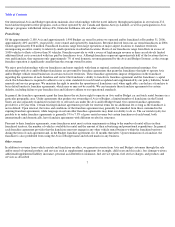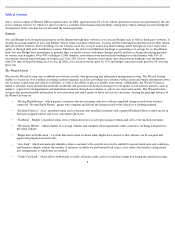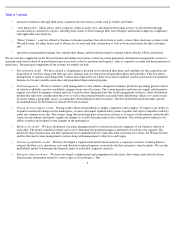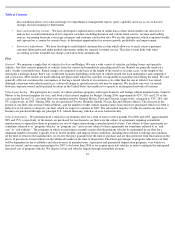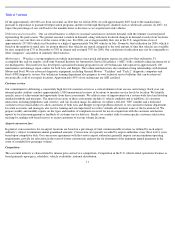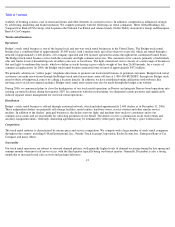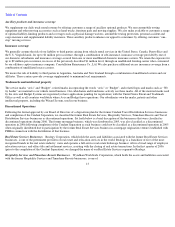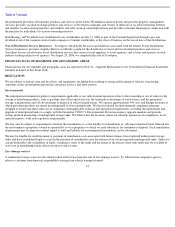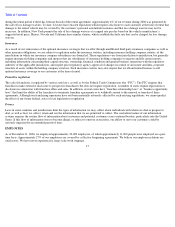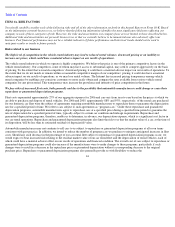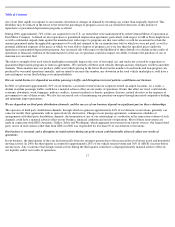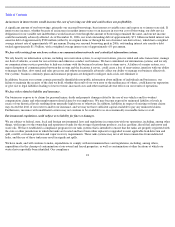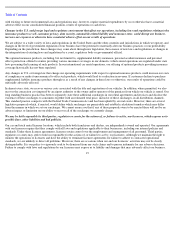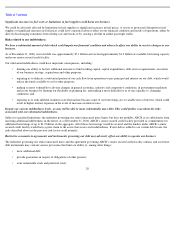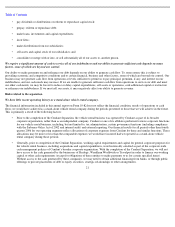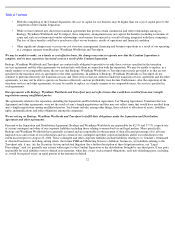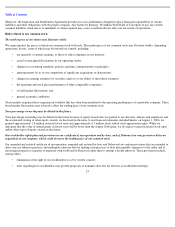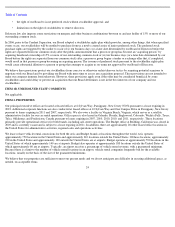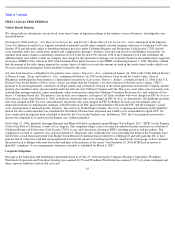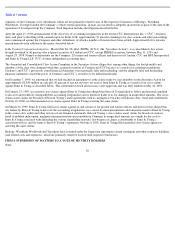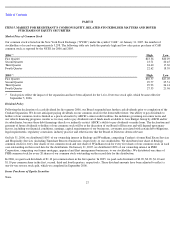Avis 2006 Annual Report Download - page 22
Download and view the complete annual report
Please find page 22 of the 2006 Avis annual report below. You can navigate through the pages in the report by either clicking on the pages listed below, or by using the keyword search tool below to find specific information within the annual report.
Table of Contents
size of our fleet rapidly in response to an economic downturn or changes in demand by returning cars sooner than originally expected. This
flexibility may be reduced in the future to the extent the percentage of program cars in our car rental fleet decreases or this feature of
repurchase or guaranteed depreciation programs is altered.
During 2006, approximately 74% of the cars acquired for our U.S. car rental fleet were manufactured by either General Motors Corporation or
Ford Motor Company. A default on any repurchase or guaranteed depreciation agreement, particularly with respect to GM or Ford, might leave
us with a substantial unpaid claim against the manufacturer with respect to program cars that were either (a) sold for an amount less than the
amount guaranteed under the applicable agreement or (b) sold and returned to the car manufacturer but for which we were not paid, as well as
potential additional expenses if the prices at which we were able to dispose of program cars were less than the specified prices under the
repurchase or guaranteed depreciation program. Any increased risk with respect to the likelihood of these defaults or a decline in the results of
operations or financial condition of the manufacturers of the cars we purchase could also impact our ability to finance the purchase of cars to
maintain our car rental fleet.
The relative strength of the used vehicle marketplace materially impacts the costs of our rental cars and trucks not covered by repurchase or
guaranteed depreciation programs or trade-
in agreements. We currently sell these used vehicles through auctions, third party resellers and other
channels. These markets may not produce stable used vehicle pricing in the future. Based on the number of used trucks and non-program cars
produced by our rental operations annually, and our intent to increase this number, any downturn in the used vehicle marketplace could have a
material impact on our fleet holding costs and profitability.
Our car rental business is dependent on airline passenger traffic, and disruptions in travel patterns could harm our business.
In 2006, we generated approximately 81% of our domestic car rental revenue from our corporate owned on-airport locations. As a result, a
decline in airline passenger traffic could have a material adverse effect on our results of operations. Events that affect air travel could include
economic downturns, work stoppages, military conflicts, terrorist incidents or threats, pandemic diseases, natural disasters or the response of
governments to any of these events. We also face increased costs of maintaining our positions on-
airport through increased competitive bidding
and minimum airport guarantees.
We are dependent on third party distribution channels, and the success of our business depends in significant part on these relationships.
The operators of third party distribution channels, through which we generate approximately 44% of our domestic reservations, generally can
cancel or modify their agreements with us upon relatively short notice. Changes in our pricing agreements, commission schedules or
arrangements with third party distribution channels, the termination of any of our relationships or a reduction in the transaction volume of such
channels could have a material adverse effect on our business, financial condition and results of operations. Most of these reservations are
made in connection with GDS (Amadeus, Galileo, Sabre and Worldspan), which aggregate reservations from various sources. Our largest third
party source of reservations (other than from GDS) in 2006 was responsible for less than 2% of our domestic reservations.
Our business is seasonal, and a disruption in rental activity during our peak season could materially adversely affect our results of
operations.
In our business, the third quarter of the year has historically been our strongest quarter due to the increased level of leisure travel and household
moving activity. In 2006, the third quarter accounted for approximately 28% of our vehicle rental revenue and 36% of ABCR’s income before
income taxes. Any occurrence that disrupts rental activity during the third quarter could have a disproportionately material adverse effect on
our liquidity and/or our results of operations.
17


